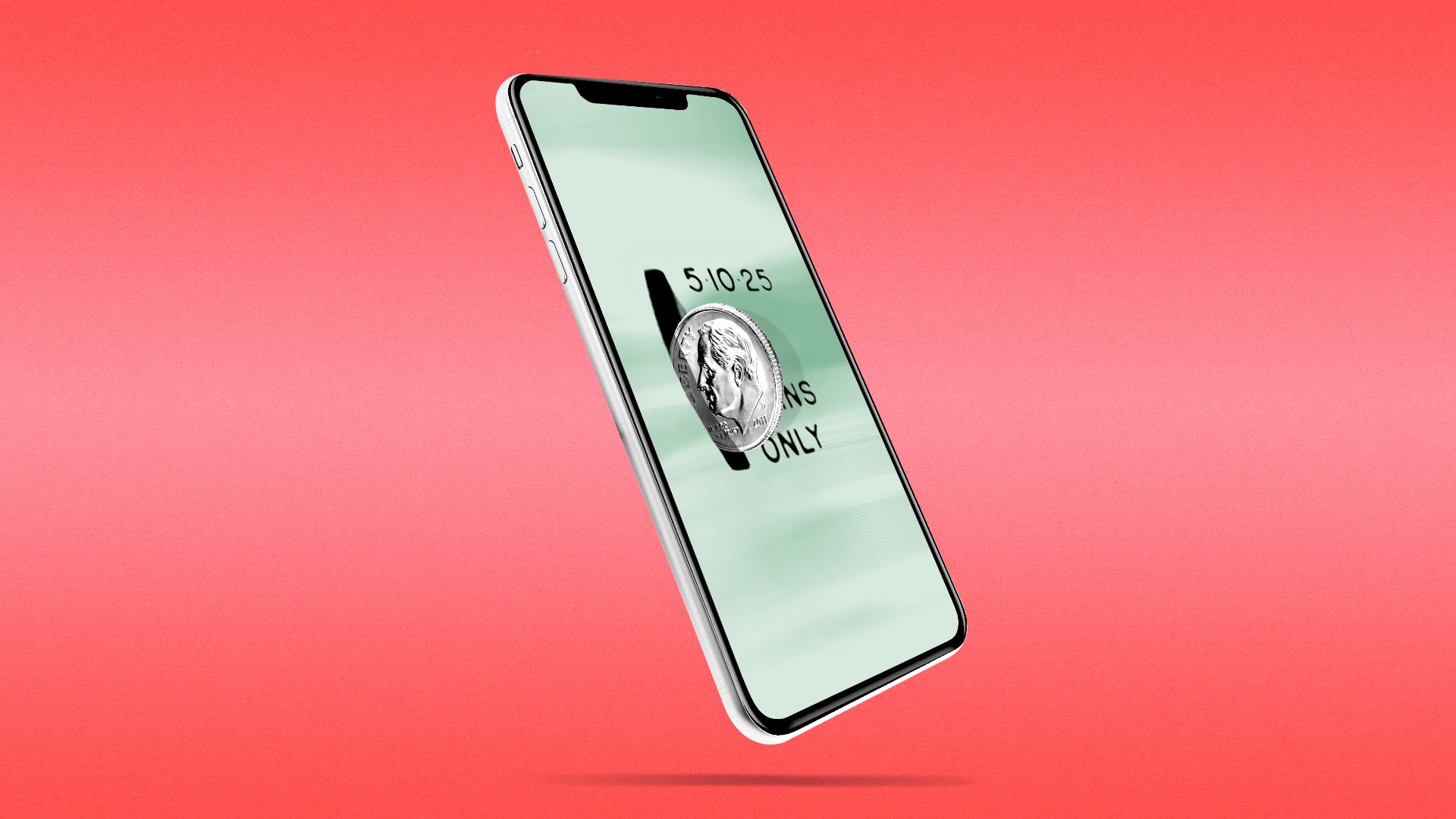
Illustration: Brendan Lynch/Axios
Media that were once free or easily accessible — including news websites, podcasts, TV shows and games — rushed to get behind paywalls during the pandemic.
Why it matters: This accelerating trend is carving the internet into many niche audiences, Balkanizing our collective media diets.
- Just as cable introduced a paid layer to television in the 1980s, the internet's paid layer is taking shape 40 years later.
Driving the news: New data from Piano, a company that specializes in publisher subscriptions, finds that news publisher paywalls took off in 202o and have seen sustained gains since.
- According to Piano SVP Michael Silberman, the rate at which users saw a paid offer or were asked to pay for content on a news website doubled during COVID.
- Publicly reported subscription numbers confirm that trend. For the first time last year, newspapers made more money from subscriptions than from advertising, according to Pew Research Center.
The big picture:Users are running into paywalls across a range of media, discovering they must now pay for content that was once free.
- In addition to news sites, readers must also pay to read individual writers who are leaving established news organizations for independent writing platforms like Substack, Ghost and Twitter's Revue.
- A cable subscription will no longer get you access to most of your favorite shows — you’ll need to shell out for a smattering of different streaming services.
- Since March 2020, the number of consumers who said they are willing to pay for five or more streaming services increased from 9% to 16%, according to data from Magid's latest Video Entertainment Study. Fewer people said they were willing to spend money on just one service.
- Apple and Spotify both added subscription podcast features this year, competing with Wondery, which was recently purchased by Amazon, and Luminary.
- Spotify has spent hundreds of millions of dollars paying for exclusive rights to a number of podcasts, including Alex Cooper's "Call Her Daddy," Dax Shepard's "Armchair Expert," and "The Joe Rogan Experience."
- "It is in some cases making some content less accessible, but I think there's still a huge amount of free content that's accessible. So is society being adversely affected by this? I think the resounding answer is no," said Jessica Lessin, CEO and founder of The Information, a high-end subscription news service.
- "Without subscription models, huge swaths of important public information simply wouldn’t be produced."
- "It's clear that mainstream quality media — whose audiences lean liberal — are definitely moving more and more toward paywalls especially at the national level," says Rodney Benson, chair of NYU's Department of Media, Culture, and Communication.
Even podcasts, traditionally the most open and freely available media via RSS feeds, are moving behind paywalls.
Cloud gaming, the adult entertainment platform OnlyFans, even car features like heated seats — all are relying on a subscription model.
Be smart: There's no clear consensus among experts about whether this fragmentation is a net good or bad for society.
Others argue polarization will accelerate as like-minded consumers pay to read their favorite writers and it will be harder for content to escape that ecosystem.
Yes, but: All things free remain hugely popular online. Many paywalled products offer some free portions. And online advertising, which supports free services, shows no sign of stopping its growth.
The bottom line: The creation of the internet's paid layer may never crowd out free alternatives, but it threatens to leave society with even fewer shared reference points.
Source: Read Full Article
